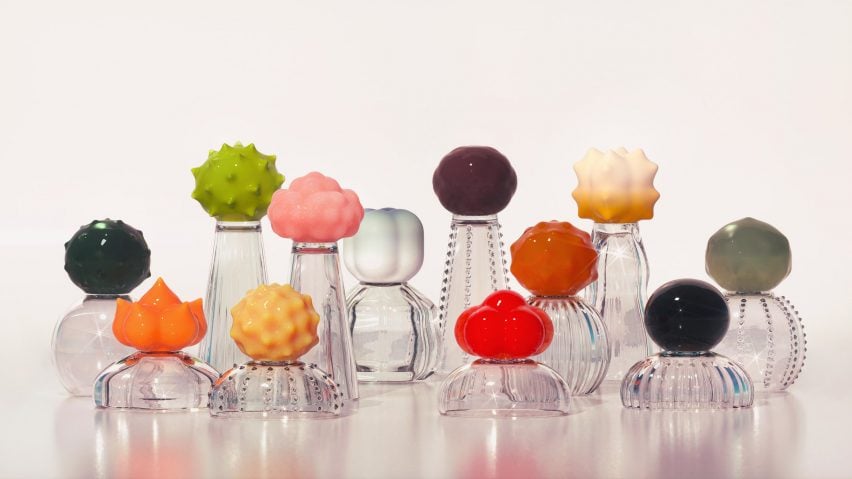
Seven student design projects that enhance the process of cooking and dining
Dezeen School Shows: we've picked seven student design projects featuring in Dezeen School Shows that refine the storing, preparing and consuming of food.
These industrial, digital and product design students have created objects and digital programmes that help find ethical food sources and prolong the life of food once purchased, reducing food waste.
This roundup of projects includes a collection of fun tableware that encourages users to play with food, modular stackable containers that create microclimates that keep fruit and vegetables fresh, and a brand that makes the world of wine understandable and accessible.
The selection of projects come from product design, digital design and industrial design courses at international institutions including ArtEZ University of the Arts in the Netherlands, Hongik University in Korea, Lucerne University of Applied Sciences and Arts in Switzerland and L'École de design Nantes Atlantique in France.
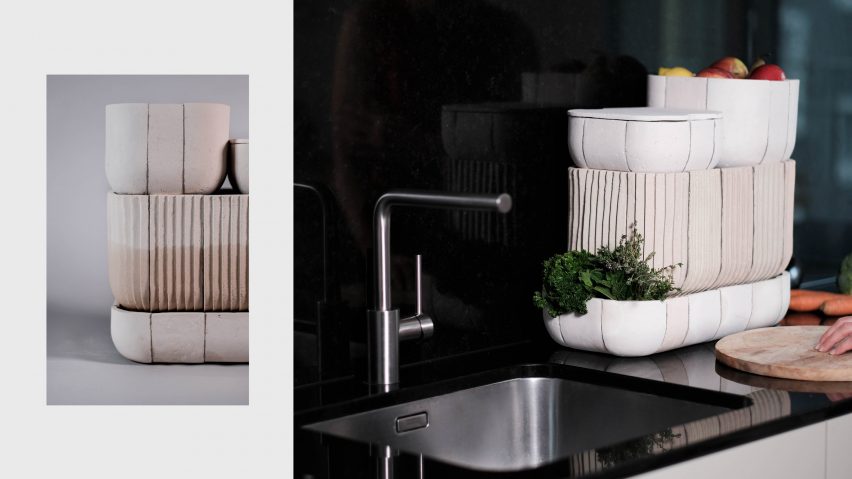
Amandine Voillat, an object design student, created a series of stackable ceramic containers, which aim to provide an alternative to electric fridges for storing fresh produce.
Versatile presents a range of modular volumes with differing exterior surfaces that create unique microclimates for storing different types of food.
"The production involves the making of shaped ceramic tiles, and by arranging them in variation, numerous different geometries can be formed," explained Voillat.
"Versatile guarantees that fruit and vegetables are treated with greater consideration."
Student: Amandine Voillat
School: Lucerne University of Applied Sciences and Arts
Course: Bachelor Object Design
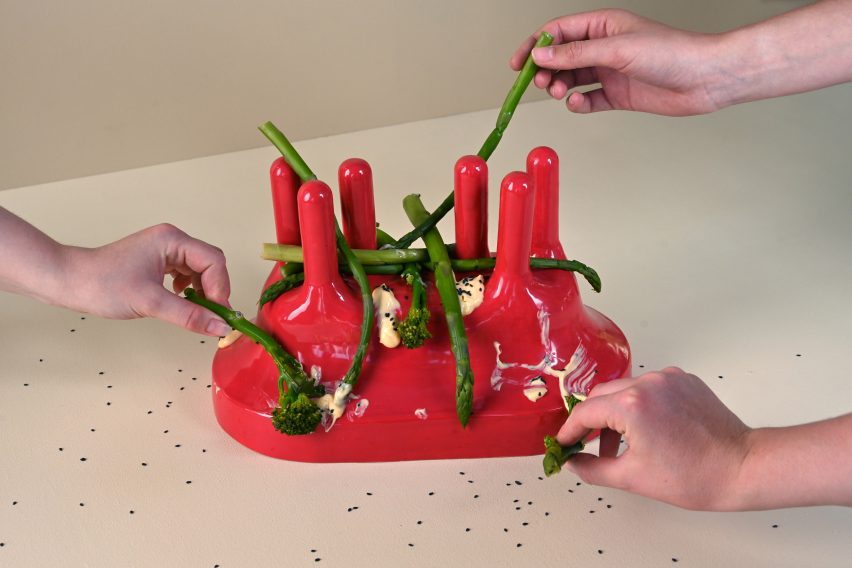
Product Design student Emma Knaken, who studied at ArtEZ University of the Arts in the Netherlands, created a series of wooden, glass and ceramic objects that intend to enrich mealtimes.
Named Moōn, the collection deliberately encourages users to play with their food – an activity which is discouraged in most households during childhood.
"The shapes, colours and textures invite you to let go of your boundaries and play with the food and the table setting," said Knaken.
"I believe we need to see food as a celebration again, instead of a necessity."
Student: Emma Knaken
School: ArtEZ University of the Arts
Course: Product Design ArtEZ
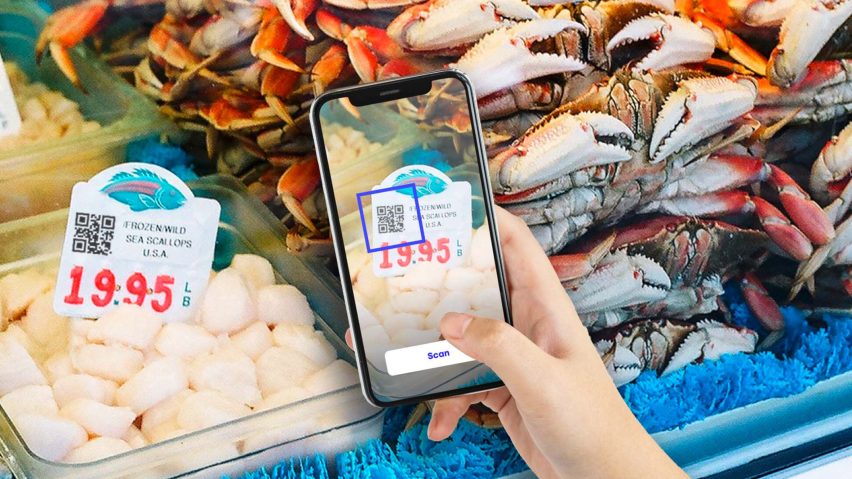
Fishain by Mathis Freudenberger
Digital Design student Mathis Freudenberger created Fishain while studying at L'École de design Nantes Atlantique with the aim of making the process of buying seafood more sustainable.
The app acknowledges and promotes those in the fishing industry who practice environmentally-conscious methods of catching fish and crustaceans.
"This application gives the 'good fisherman' traceability, recorded history, and automated labeling of his catch," said Freudenberger.
"Fishain generates regulatory labels for sale mentioning the name of the fish, the date, the area and the fishing method. This 100 per cent digital and transparent labelling system is a valuable tool for discerning consumers."
Student: Mathis Freudenberger
School: L'École de design Nantes Atlantique
Course: MDes Digital Design
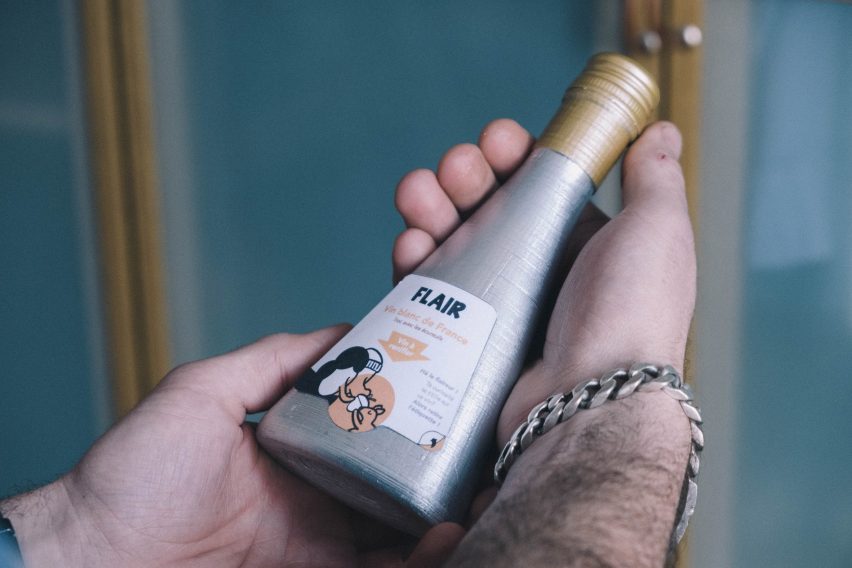
While studying food design, Marie Bal-Fontaine devised a brand that allows people to make informed purchases when in the market for wine.
Flair uses standardised labelling and 100 per cent recyclable vessels for their wine, which is selected as a result of conversations with experienced wine retailers.
"Flair connects passionate winemakers with wine neophytes. This global design project helps young people to decipher the world of wine," Bal-Fontaine said.
"Flair brings a new, uninhibited, local and eco-sensitive approach to the world of wine."
Student: Marie Bal-Fontaine
School: L'École de design Nantes Atlantique
Course: MDes Food Design

Beyond the Lid by Mily Bogaarts
Product design student Mily Bogaarts designed a collection of vessels that take cues from lids found in the kitchen.
Items include a fermentation vessel, pestle and hammer, a concept for maturing food through vacuum-sealing, and a refrigerator that uses sand to keep produce cool.
"Beyond the Lid explores how the greatest stories can be found right under our noses," said Bogaarts.
"A kitchen lid has been the source of inspiration for the project, as it has given unexpected insights into food preservation and our attitude towards nature."
Student: Mily Bogaarts
School: ArtEZ University of the Arts
Course: Product Design ArtEZ
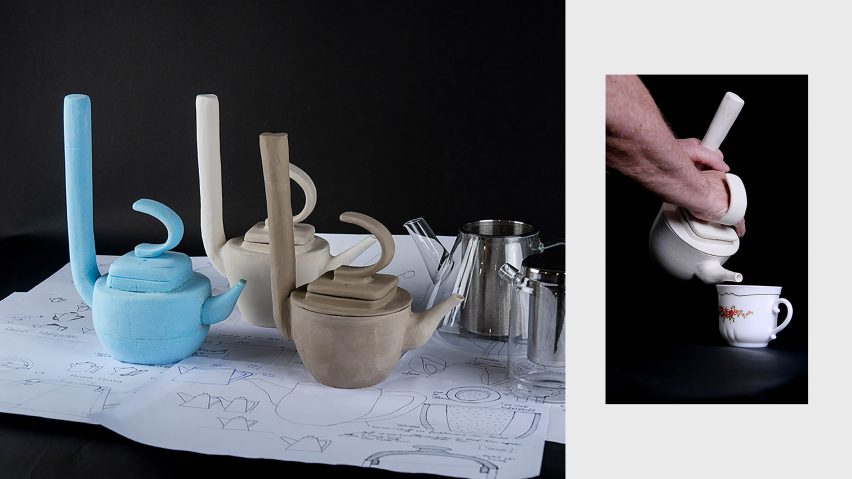
Grab – Grip – Grasp by Nadja Bolliger
Object design student Nadja Bolliger designed a range of teapots that feature an unconventional system of handles.
The pots are characterised by their one upright and one curved handle, which allow them to be used by people with hand-related ailments, as well as those who simply wish to explore different teapot designs.
"A durable system of gripping, pouring and cleaning the teapot is devised using an occupational-therapeutic approach that avoids hand fatigue, particularly for people with hand ailments," explained Bolliger.
"This universal teapot is designed to make teatime a pleasure for everyone no matter their hand impediments and fosters use without the discomfort of straining their hands."
Student: Nadja Bolliger
School: Lucerne University of Applied Sciences and Arts
Course: Bachelor Object Design

POP+ALE by Seo-hee Hong and Soo-jin Chae
While studying Industrial Design at Hongik University, students Seo-hee Hong and Soo-jin Chae created a range of glass objects with colourful modules to enhance the cocktail bar experience through sensorial stimulation.
Pieces in the POP+ALE collection range in size, texture and colour to reflect the different characteristics certain cocktails, engaging the senses beyond just taste.
"When you hold and feel the module, it activates your vision, smell and touch, enabling you to imagine the taste of cocktails as the module explores its colour, fragrance and texture," explained the designers.
"Users can examine different cocktails and savour the taste of drinks with satisfaction and amusement."
Students: Seo-hee Hong and Soo-jin Chae
School: Hongik University, Korea
Course: BA Industrial Design
Partnership content
These projects are presented in school shows from institutions that partner with Dezeen. Find out more about Dezeen partnership content here.